Snippets from the Ancient World: Trojan Horse, Gates of Hell, and Angamuco
history·@donkeypong·
0.000 HBDSnippets from the Ancient World: Trojan Horse, Gates of Hell, and Angamuco
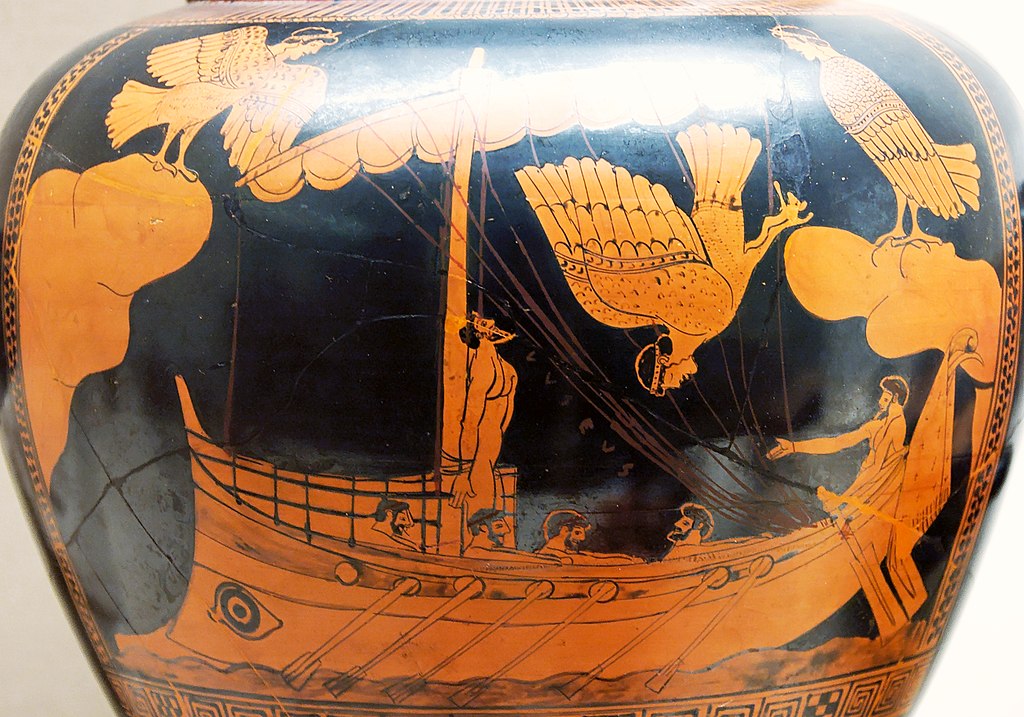 History and archaeology fascinate me, though I have no professional background in either field. Most recently, I have been reading the works of Homer and learning more about ancient Greece. This week, I encountered some speculation that I had never heard before and it seemed to be a worthy subject for a post. However, it wasn’t enough for a full post, so I decided to write about three separate things I've learned lately about the ancient world. These brief snippets take us from Ancient Greece to Ancient Rome to pre-colonial Mexico. ## No Trojan Horse? The Trojan horse is such an important myth and metaphor that I was surprised to learn it may never have existed. The popular story is that the Greeks built a giant wooden horse and left it for the Trojans to take into their city after the Greeks had abandoned the battlefield where it sat. Hidden inside the wooden horse were elite soldiers. So once it was taken into the city (as an offering for a goddess, perhaps), the soldiers crept out at night and opened the gates so the Greek army could take Troy, a walled city which had been impenetrable to them. 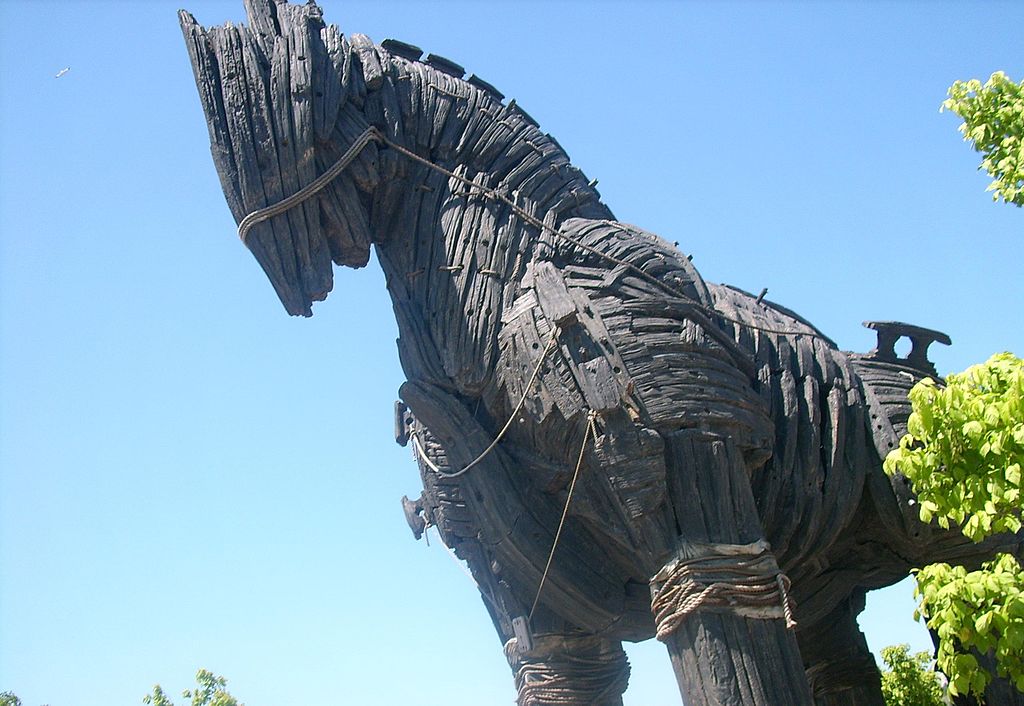 *Wooden horse. Creative Commons via Wikimedia by Tevfik Teker.* History relies on people recording their observations. It turns out that some accounts of a Trojan horse filled with soldiers came later from oral historians, while the earlier accounts (which should be more reliable) used words that could be interpreted to describe a different wooden structure. It may have been a siege tower, which was used to make a breach in the walls of the city of Troy after the Greeks had battled outside it for years. A siege tower would have brought the Greeks closer to the top of the walls, making it easier to clear defenders from the fighting platform. A battering ram could have been used on the gate. The term “hippos” (meaning horse) also had other potential applications and symbolic meanings. One interpretation suggests the Trojan horse could have been a ship or a galley used to pay tribute. 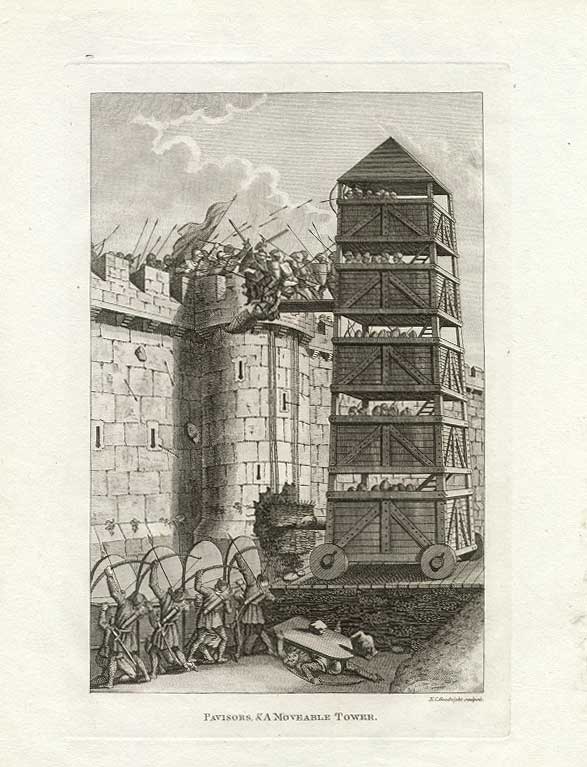 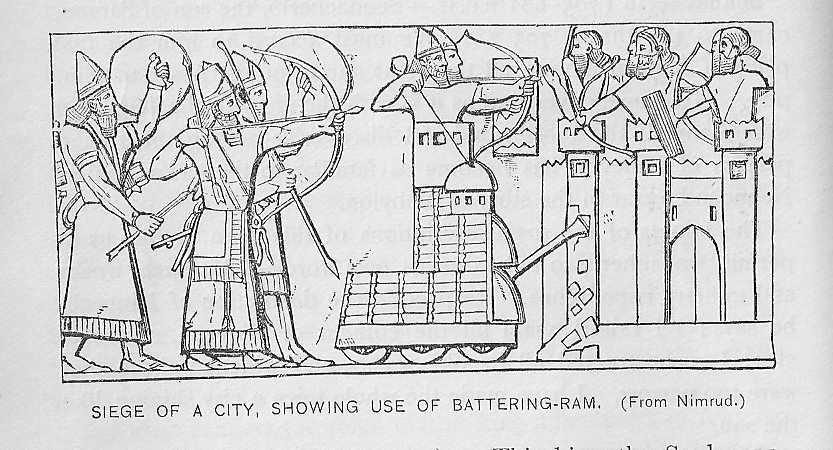 *Siege towers were temporary (sometimes mobile) structures that raised the level of the attackers so that they could assault at the same level as the soldiers defending a fort or walled city. Sometimes, a battering ram was used also to knock down the gate, once the attackers' archers could neutralize any defense from the walls above. Public domain.* The Greek geographer Pausanias, in the Second Century A.D., wrote “That (the Trojan horse) was a contrivance to make a breach in the Trojan wall was known to everybody who does not attribute utter silliness” to the Trojans. The idea of the Trojan horse has become a metaphor for the stealthy entrance of something that’s often dangerous to the larger host. For instance, malicious computer programs that are let into computers and opened by their users under benign pretenses are called Trojans. Wouldn’t it be funny if the horse never existed and this wooden structure was simply a wooden siege tower or ship? https://en.wikipedia.org/wiki/Trojan_Horse ## Scientists Find Amazing Explanation for One of the Roman Empire’s “Gates of Hell” In ancient Roman times, the “Gates of Hell” were thought to be portals to another realm. There were a number of them scattered around the Mediterranean region. Some were used to make sacrifices (animal and perhaps human ones) to the Gods. Often, the animals (such as cattle) were killed instantly as they were led into these gates, but the priests walked out again without any injury. How was this possible? Divine geothermal intervention may be the answer. At the ancient city of Heirapolis in modern-day Turkey (then within the Roman Empire), archaeologists discovered one of these “Gates of Hell” in the form of a stone doorway leading to “a small cavelike grotto”. There was a theater with stone seating and the “gate” was built into the rock face. 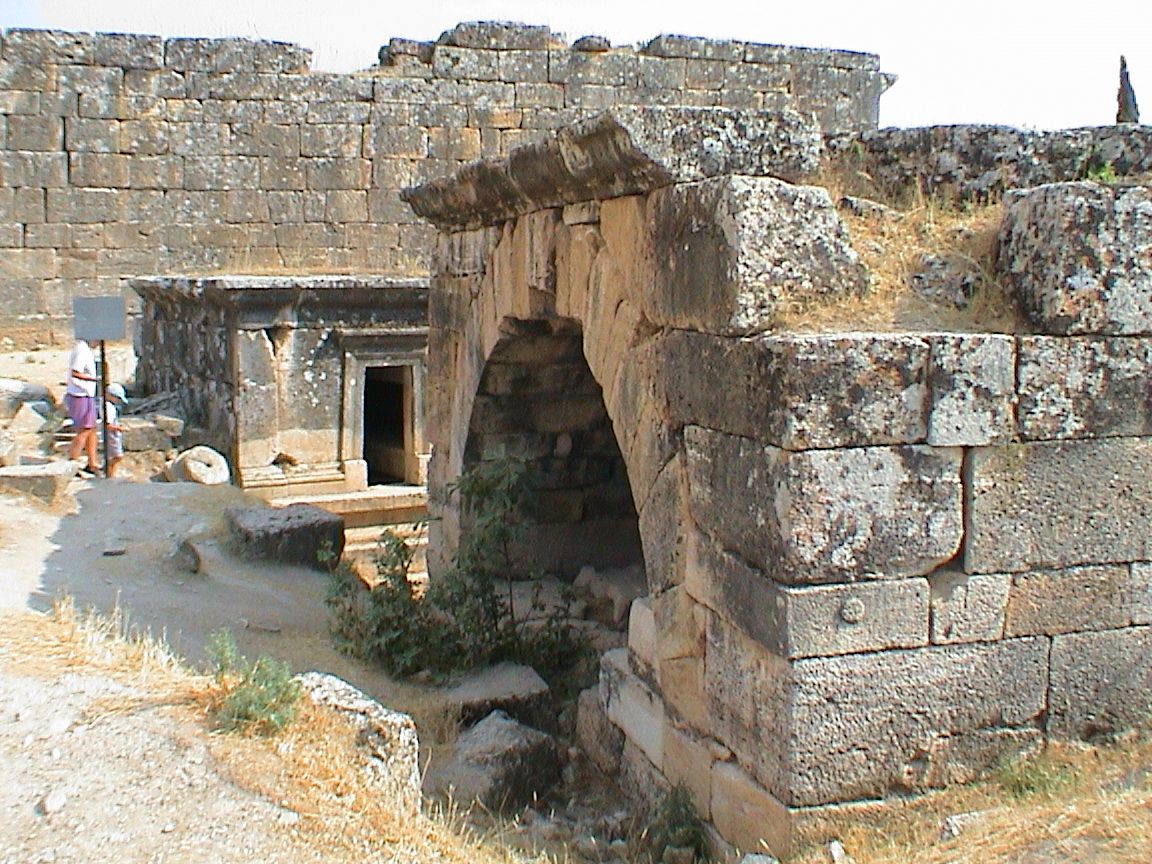 *The necropolis at the ruins of Hierapolis. Creative Commons via Wikimedia by Dezidor.* 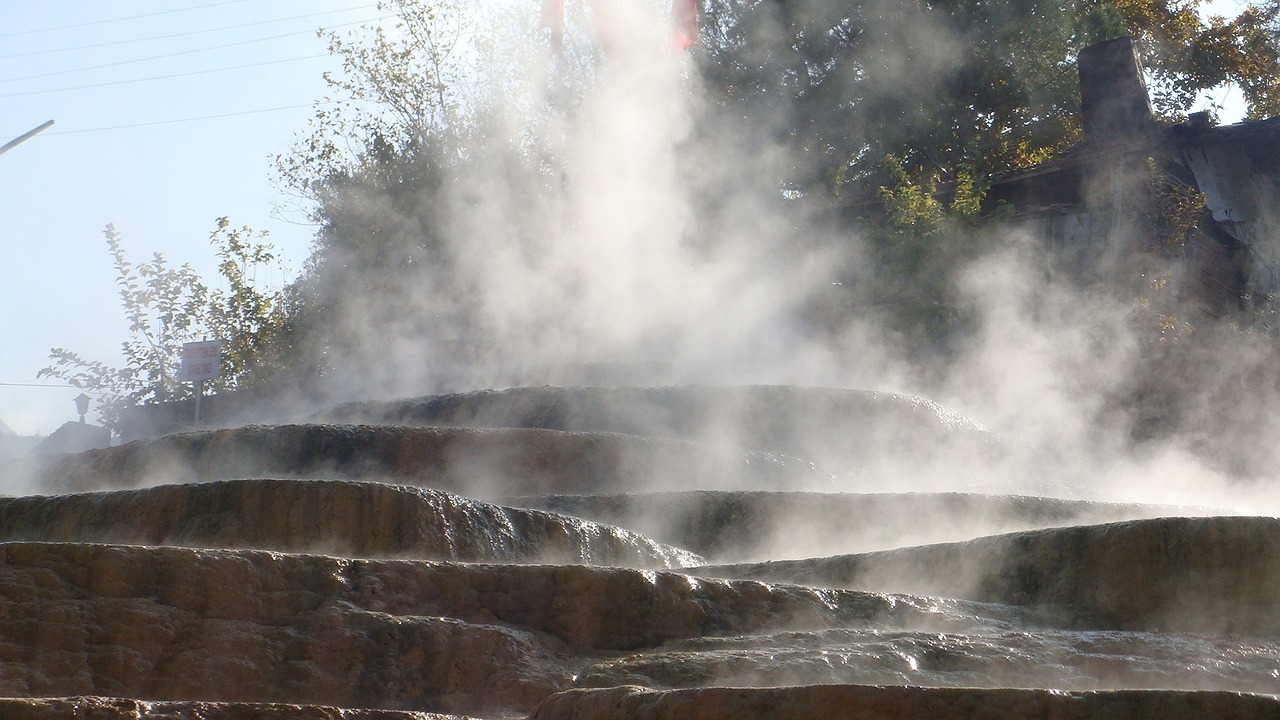 *Geothermal springs at Hierapolis. Public domain from Pixabay.* Underneath that rock? Hell itself. There are thermal springs in the area. Directly beneath the stone “gate”, a fissure emits pure carbon dioxide. Even today, the carbon dioxide emitted from the earth is so strong that it looks like a small cloud of mist. It can kill birds which come too close to it. Scientists determined that if a human walked into it, they could breathe above the cloud. But if that human priest was leading an animal such as a bull for sacrifice, that animal might breathe the CO2 cloud and be killed instantly. And so, the Gods accepted the sacrifice and the priests escaped unscathed. Furthermore, the scientists believe there may be more of these geothermal features in other parts of the former Roman Empire, where there were several portals known as the “Gates of Hell”. http://www.sciencemag.org/news/2018/02/roman-gate-hell-killed-its-victims-cloud-deadly-carbon-dioxide 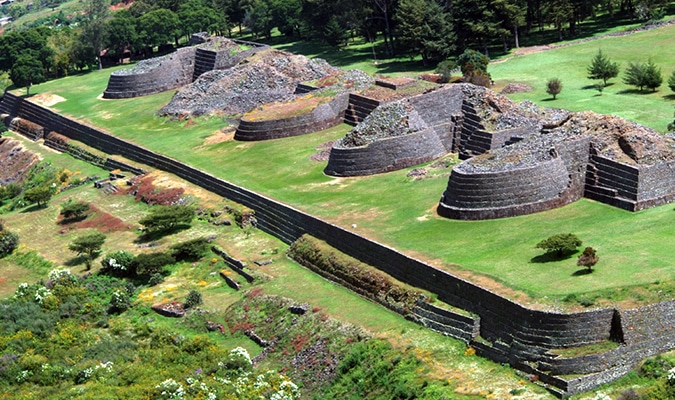 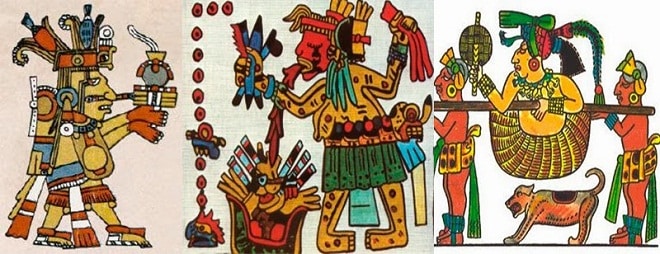 *An old Purepecha city (top, from michoacan.travel) and artwork (below, from cultura10.org).* ## Ancient City in Mexico Had as Many Buildings as Manhattan LiDAR certainly is changing our understanding of some ancient civilizations. It is a laser mapping tool; the name stands for light detection and mapping. In what would have taken archaeologists a lifetime to discover, a few passes over the area with laser imaging provides maps of ancient structures in stunning detail. It even works in the jungle, where vegetation reclaimed and obscured many ancient Mesoamerican structures centuries ago. In 2007, the city of Angamuco was discovered in the province of Michoacan in western Mexico, dating back to about 900 A.D. But researchers had no idea how large it was or how many structures it contained. Thanks to the LiDAR scans, they pinpointed some 40,000 structures over an area of 10 square miles. Of course, these were not as big as the buildings in Manhattan. At its peak, the city may have been home to 100,000 people of the Purepecha (also known as Tarascan) civilization, which once rivaled that of the Aztecs. Here is a video showing the LiDAR results. It has had similarly spectacular results discovering ancient structures beneath the jungles of Guatemala and the sands of Egypt. Amazing. https://youtu.be/dBbMZ59sNXo *Sources:* https://www.smithsonianmag.com/smart-news/laser-mapping-reveals-ancient-mexican-city-once-had-many-buildings-manhattan-180968202/ http://www.natureasia.com/en/nmiddleeast/article/10.1038/nmiddleeast.2017.132 *Top image: Vase picture shows Odysseus lashed to the ship's mast to escape the lure of the Sirens. Public domain.*
👍 mizdais, legendarryll, umar97, hrhmikelength, jamesmovic, horlaide, deril, chukuibijenny, naijapidgin, kmubaraq, enjoyy, lorenzo1420, sexygirl123, belvajarandilla, rodonlegend, kingwazza, heriafriadiaka, ayijufridar, suci, aqiel, danielghufran, geekgirl, usammiismi, wilerv, martin897, jamhuery, sirryg, citizenluke, jollyjaper, epan35, damarth, zulfan88, gosteemgo, jlufer, vandadream, cause-no-harm, federacion45, giemijares, anotherjoe, nickl, steemrollin, andimywapblog14, ajvest, lil-mich, joeparys, madviking, organicgardener, ghoststories, desmond41, noopu, sweetestglo-eu, ayoade96, happyphoenix, abhicrypto, rimon24, sweetsssj, exbundi, candyman, dragonking, sciencevienna, neella, daddykirbs, michaelwilshaw, patricksanlin, daddydorsey, let-it-be, mrsexappeal, tomilolafadipe, free999enigma, devinalivaudais, builderofcastles, altportal, michaellamden68, teammorocco, t-bot, nanzo-scoop, veejay, rynow, gomatthew, sebastianjago, calatorulmiop, lemony-cricket, jacobts, mark-waser, digital-wisdom, jwaser, herpetologyguy, morgan.waser, bwaser, ellepdub, ethical-ai, strong-ai, davidjkelley, technoprogressiv, handyman, aldian, mummyimperfect, ak2020, mafeeva, opc, bonv, sliverwang, joviye, bonjovis, hanamana, bitcoinparadise, thelindvall, sipildanarsitek, villainy, beervangeer, beckenbauer, gokulnk, zaiageist, noasalfha, chitty, stea90, kyriacos, ogoowinner, cldgrf, alokchitri, mohammad32, paperbull, venuj, healthsquared, inkandfilm, shahbazfayyaz, hickok45, daycaredave, dovetail, cryptorainz, mauricemikkers, broaceh, gangas, a-0-0-0-a, toxic, cryptobrunkey, lemouth, sebhofmann, khayziljoy, mytechcrunch, sv67216721, abiola-vesta, justtryme90, nakedtrader, chickenfeet, guibe80, lifetoday, rainbowdash, simba, donkeypong, analisa, kevinwong, danielwooddesign, arconite, ehf, a-0-2, madushanka, lynncoyle1, uradick, lordjames, thebluespirit, rabo, rimonkst06, lunaticpandora, playfulfoodie, sauravrungta, uwelang, ceocarlos, jkkim, whack.science, trafalgar, thunderbirdcomic, edgarr, pakcamat, jpgaltmiller, ripperone, intelli-jan-tam, japh, magiliw, shonariver, zaki1107, poimenpost, monkeypattycake, marin10, emcvay, thecryptofiend, themanualbot, isaaceko, dragon40, thenightflier, tymba, dgorbunov, abrockman, mandagoi, bibekstha75, ucsdsu, dodybireuen, enjieneer, gavvet, erangvee, maimaimaichan, reekadoh, rightscomet, helsy, bobinson, mzuami, sparkosonic, entrepreneur916, nagaclub, pandanwaffle, dragonslayer109, timsaid, steve-walschot, jacor, mandela, sportspodium, sweetnaomi05, bunnymoney, pharesim, kingsberry, azat1, gokulramdas, bearone, freethink, f-arms, mcekworo, nonameslefttouse, vmsolutionsltd, middle-theory, hiltek, kabirlec9, escobar, jamtaylor, jocrazy, kinwai, src, exle, akamtn, inchonbitcoin, btccurrency1, applelex, arama, timbot606, janicehung, keepdoodling, tokyodude, incomemonthly, luismanuel, rawutah, yasmaoro, happymichael, hillaryaa, fred703, graviton, crazymumzysa, ruthofisrael, harferri, a2jimenez, lokii, sweever, fajarrezekina93, reedracer, utieyin, samue2013, sulev, hanshotfirst, sammie85, teamhumble, i11nerd, yimmyjob, iwanderela, badzkie123, tehshizno, coliraver, nubbiecakes, spencerchinelly, intan, evolved08gsr, bekoilham, beograd, riad420, mubarak, petrmisan, popon, magnat, rezapurnama, serkagan, aylacroft, joelgonz1982, broncofan99, emisuhaimi, cyber.explorer, rubelhasan, alltech1, caliconinja, mirzacho, findub, holoz0r, branimir.mihalic, mosheheart, dzweta, sageb2, mooktshabalala, togietogs, jmstriker20, brahma, danieldyemusic, drac59, khaira, katrina71, emmanueluk, mahalo, solarguy, funbobby51, foruni73, devilcat, josejirafa, appleskie, ograstaman, ryivhnn, pigguo, brian.rrr, aron007, mahesh0917, streetartgallery, footlooselatika, captainobviou3, ocean56, ahmadmaulizar, niranjan, imthiaz23, galaxyblu, narutorock, ceepee, phoneinf, munnapandey, deanhass, vannour, steemcultures, steemworld, aceh, kangsukin, abupasi.alachy, elenasteem, kartiksingh, kkk1818, zarzish, merkaba.media, stefanski, josearteaga, boggan, aamirqazi, blueshadows, anwar12, ebij, alinabarbu, abinashray, gamersclassified, fulflet, dalaka, laxamana, ericdyce, sourabh777, laviq, resteem.bot, graciousrecipe, yaan, dmsk42, netwist, walidchabir, peshog, liuben850924, nazh, cimut, sadpotato, daniarnold, cameraindonesia, nischal123, boysteem, dropthebeat, devendrajangid, gulelalah, kani77, jonybraim, ghmboyan, cristi, embutv, milan1281, greatestbastard, crissimoes, kyndyz, phyochay, engkotbaceeraya, milanothenewguy, leczy, neenah98, agentzero, saifulwalker, judiclearity, highonthehog, levycore, ijourar, momosan, amekbarli, maggiegrace, lebonheur, jacowolf, senseicat, leeboi, patrickzhou, thebank, jade56, khairul88, postanthropocene, azazqwe, devart, tangerinetravels, geekahol, khushbakht, bahadur, harislalana, samsonike, se7en9702, rionpistorius, putra-muda, eatdrink-n-bmary, gvand, mapman5000, ibalbon, mittymartz, poyraz69, paulawonders, aldentan, munawar87, johntagbo, acehserambi, raybox, lrbitcoinguy, xintas, amaltea, ericvancewalton, bue, imranpase, jonabeth, munawire, surpassinggoogle, goode, steemgigs, ranielbrianulan, yanga, senseibabs, nessyquel, mart101, kerry234, ekjosh, motivatorjoshua, berylwills, juliusjamex, tyrex, jeffiyaro, rahul.stan, baboyed1000, karyah1001, kingingodwin, mrxplicit, strings, ligarayk, babaj, camilus, loydjayme25, hoobeehey, veejay2312, kul0tzzz, syamsudduha2, pojgaerlan, jims, thamrin, jefry113, mhel, rejzons, yourmercury, henrychidiebere, fooddadiph, smafey, zohaib715, itsjessamae, wagun001, superstarxtala, ivanusaur, arcange, neneandy, tony-duke, raphaelle, arjimi, salvadorcrg, eurogee, luijii, marysent, joeysison, arifmunandar72, obehioris, siddartha, laki87, nashidibaju, antonio-art, naijaboost, blessing97, okekemmichael, sequentialvibe, lakeshorebrewery, trizwansyah79, estrellamag, whalecurry, realhousewife, sourcehope, starvote, sherlie, teofilex11, softboy112, saboutstorytime, ace108, crypto.paulinho, asonintrigue, artgirl, breezin, nanggroe, patrici, theprintuplist, rianh, fadhilarnas, opluke, lautenglye, siihaabuur,